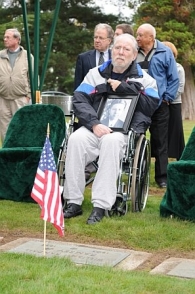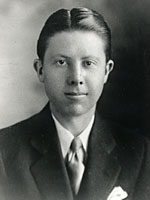Some months back I was contacted by the granddaughter of one of the members of the Dillinger Squad. It's only one of many that I've had with families of the depression era's FBI. Her story about "grand dad" came from her own father who of course was the brother of this agent. One would think that his story was generally accurate, getting it first hand from his FBI brother who was there. That would be anyone's immediate reaction. The problem was apparent to me upon further questioning: fact is, "dad" didn't really get the story from his agent brother. It was actually related to her father through a third party family member. Now things would start to unravel....
The story as relayed to me by her about grand dad shooting and killing Dillinger would be exciting, but the downside was the fact that while listening to it, I knew it wasn't accurate and I surely hated to be the one to tell her it defied the historical record. Her grandfather was present at the Biograph that night as an agent assigned to the Chicago FBI office, I knew that. However, statements by others present, coupled with the original sketch of where everyone was, and much more revealed her grandfather was not only not involved in the actual shooting, but wasn't in a position to shoot anyhow. If this story was supposedly accurate, then it would alter the accounts of nearly ten other agents at the scene that night.
One of two things happened to this story as it was passed to the family. Either the agent himself exaggerated his role in the Dillinger shooting or the third party and/or "dad" misinterpreted what was told to them and/or exaggerated it. In most cases, I'll think you'll find the latter the real culprit. Witnesses to history can be great sometimes, but one must take their accounts into consideration with other existing evidence.
Distorted family stories are common. People are people, and it happens; usually not done purposely. The passage of father Time starts playing tricks on many and memory loss rolls in. Family stories, photos and documents are no doubt treasured pieces in a long ago puzzle that sometimes is pretty sketchy to say the least. Many times, they provide the missing clues that historians never knew about! But be careful of these stories and check them with other relatives, family friends and others before you embark on a time consuming, and sometimes embarrassing, crusade to nowhere. Most importantly, see if there are family photos or personal documents to back up the original claims, such as letters written, diaries, etc.
The last thing you want to hear months [or years] after researching is that "Aunt Helen" had been known to exaggerate profusely or "she's told that story in ten variations!" Remember, the further you get from the original source, the more the story is likely to change, no matter how sincere the teller. Usually a tell tale sign that "something is amok" are variations of the story as you ask questions of others who are supposed to know! Bottom line? Always consider the source in conjunction with other evidence!


